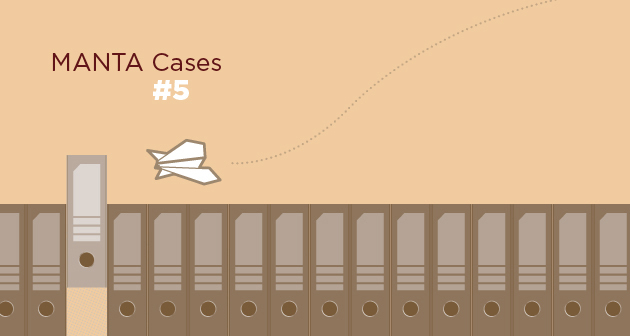
Today’s edition of “MANTA Cases” was inspired by a recent MANTA Sales training. Our sales folks were discussing one of our largest customers, a Fortune 500 bank, and their struggle to track changes in an ever-moving environment.
Data lineage is not always a platform for proving the existence of security processes and achieving regulatory compliance. Sometimes data lineage just provides an elementary function: it tracks the changes and transformations in the data environment and visualizes them in a detailed and accurate map. And many of our customers use MANTA just for that!
Our customer, a Fortune 500 bank, had really comprehensive, high-level internal systems. In order to keep them up and running, it had its own team of developers following an agile development process. There were several reasons why the customer chose MANTA in the effort to automate their processes.
Reason #1: The Inevitability of Change
The bank’s management was very much aware that the development processes and changes in the environment needed to be recorded, not only to continuously improve future development but mainly to understand their data. But from the beginning, they were not quite sure how to achieve that. Their solution was to make developers write down, record, and notify the rest of the team about every change that they made in the environment. That didn’t work, mainly because it is almost impossible. After all, the only reason developers exist is to make changes in the environment.
Reason #2: The Pain of Documenting Stuff
Often—and this case was no different—teams of developers have their know-how, their undocumented knowledge. They know how they have built the environment, and they are the ones continuously working on it. Sometimes it is just impossible to get that knowledge out and documented. Also, people come and go. Often, there was no prior documentation for a task that was about to be completed simply because no one had ever done that before in this company. That is why the idea of MANTA is so promising for developers. It can read and document data automatically without prior assumptions of how the data flows should look. Which leads us to…
Reason #3: Make-believe Lineage
This is usually more of a post-data-lineage realization, but it is one of our favorites. Often, developers do have everything documented and know exactly what transformations are performed in their data warehouse—or so they think. After seeing MANTA’s data lineage, customers are often surprised by the visualization. They say they “could have sworn” it was “like this”. Well, you can’t fool MANTA.
The Result?
The customer deployed MANTA in several company teams to help with process automation. All processes and reports were delivered by MANTA in a matter of hours, replacing the months of manual work done in the past. They really took advantage of MANTA’s broad spectrum of connectors, because they had multiple data governance solutions in their company for different tasks. The developers used MANTA’s native visualization to track transformations in their data warehouse; the financial department used MANTA in combination with Collibra’s solution; another team used MANTA together with IBM Information Governance Catalog to calculate impact analyses; etc. With MANTA, the options are really unlimited.